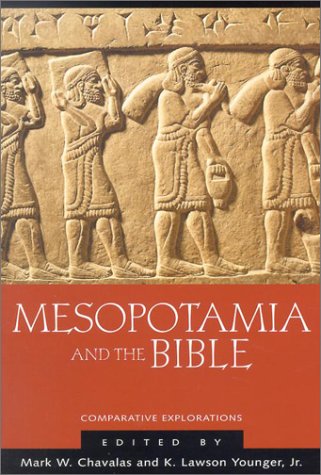MESOPOTAMIA AND THE BIBLE
Written by Mark W. Chavalas and K. Lawson Younger Jr, (eds) Reviewed By Alan MillardToday it is hard to realise how little was known about Assyria and Babylonia 150 years ago. Before excavations began there in the 1840s, the Hebrew Bible was the only contemporary source of information. The impact of the early discoveries on biblical studies is the subject of Steven Holloway’s enlightening essay, ‘The Quest for Sargon, Pul and Tiglath-pileser in the Nineteenth Century’, surveying exegetes’ attempts to identify them before and after their names had been deciphered in cuneiform inscriptions and to establish their chronology. He demonstrates the early stages of what Mark Chavalas describes in his introductory chapter as ‘A Century of Tension’ between Assyriology and biblical studies. After helpfully noting the deductions about Israel’s history made from Layard’s work in particular, he summarises George Smith’s recovery of the Babylonian Flood Story and Friedrich Delitzsch’s controversial and misleading Babel und Bibel lectures. He then makes brief observations on the contributions drawn from Ur, Nuzi, Ugarit, Mari, Alalakh, Ebla and Emar.
Of the other twelve essays, I want to draw attention to four for the fresh thinking or new information they present, without decrying the value of the others. Richard Averbeck discusses the place of Sumerian studies in biblical studies. Following S. Talmon, he enunciates four major principles of comparative research: proximity in time and place, priority of inner-biblical parallels, correspondence of social function and holistic approach. After looking at indirect comparisons, Averbeck explores recent approaches to historiography, arguing that there is history writing in the Bible (contra J. van Seters, T.L. Thompson and others) which served a similar purpose to history writing in third millennium bc Sumer, with theology having an important function in both. Finally, he lists parallels between the temple-building texts of Gudea and of the OT. He concludes that the Sumerians ‘influenced ancient Near Eastern culture in a formative way’ through the ‘underlying common cultural foundations’ of the region. Some of that influence can be seen mixed with local customs at Emar, a site on the mid-Euphrates, where excavations from 1972 to 1976 yielded a thousand or so cuneiform tablets. Daniel Fleming studied some of these 13th century bc texts for his doctorate and has published major studies of them. Here he investigates the Syrian kinship of the Patriarchs as background to a presentation of a seven-day festival for the first full moon of the year, celebrated on a seven-year cycle with a procession to a shrine of stone pillars outside the town. That involved a ‘treaty-like bond’ between the people and a god, something usually considered unique to Israel. The timing of some elements resembles various biblical rites and the place of town, priests and king suggest a ‘long continuity with custom shared across the inland band of western Syria-Palestine’. That area was largely occupied by Aramaean tribes early in the first millennium bc and William Schniedewind speculates about their history. He argues that Aram was a geographical term, then the name for its inhabitants and goes on to discuss the rise of the Aramaean states from pastoral nomadic groups with analogies from Edom and Israel. In Lawson Younger’s account of ‘Recent Study on Sargon II, King of Assyria’ the Fall of Samaria, the deportation of Israelites and the importation of foreigners and the campaigns of 716/15 and 712/11 against Philistia are presented in the light of re-examination of the records and texts published over recent decades. All the other essays in this volume, most of them presented at a meeting of the Near East Archaeological Society in November 1995, are profitable and welcome for the positive attitude they take to ancient Near Eastern writings, including the Bible.
Alan Millard
Alan Millard
The University of Liverpool
Liverpool, England, UK







